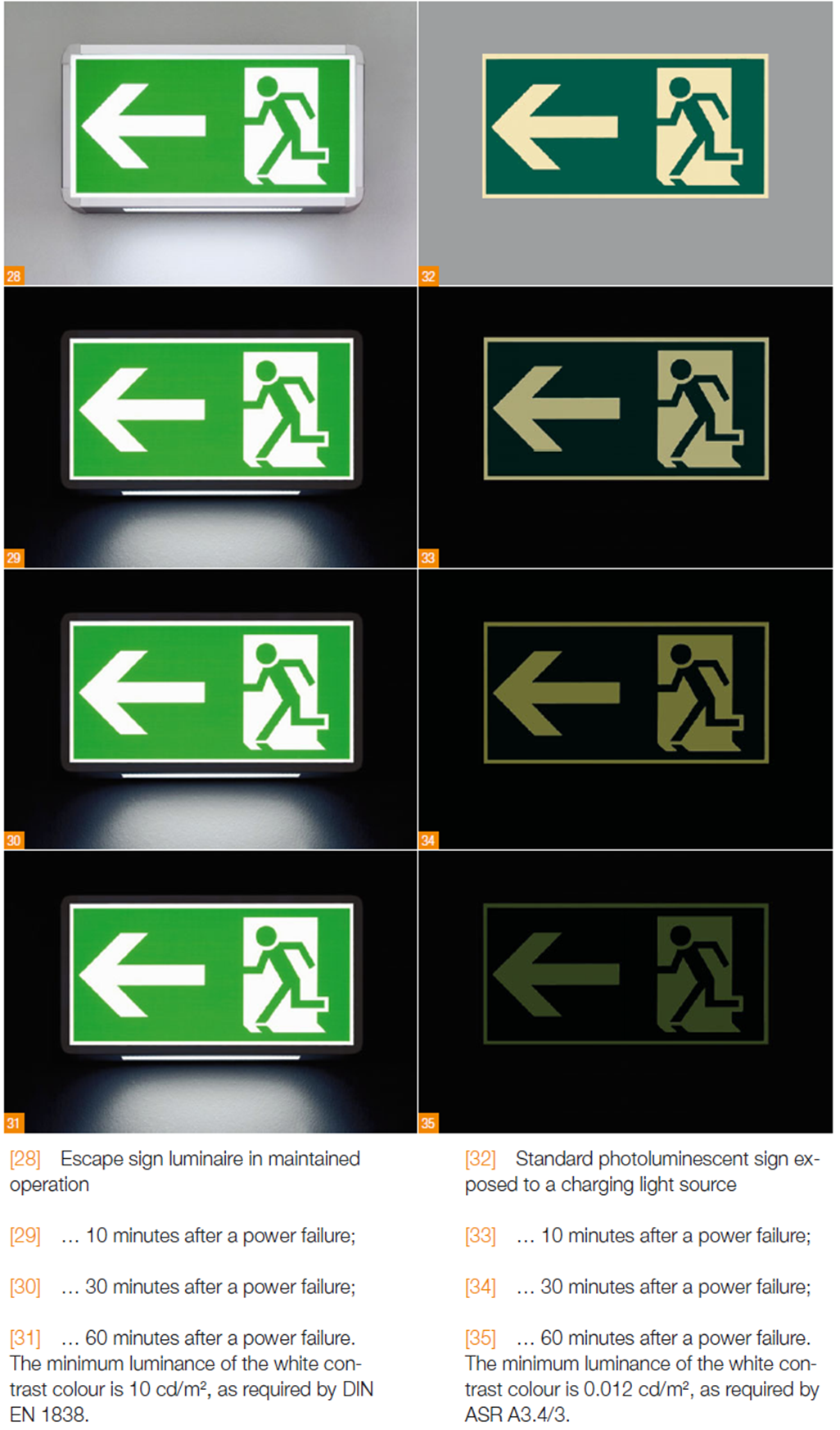Photoluminescent exit signs not commercially viable

“One of the major concerns is the confusion amongst electricians, building owners and building managers, as to how PL exit signs may be used.
If installed in accordance with the NCC amendment, PL signs will cost considerably more to install and maintain than the current electrically powered LED exit signs,” says Lighting Council Australia Chairman, Russell Loane, OAM.
“The installation of a PL exit sign typically requires the installation of two additional luminaires. Firstly, the NCC amendment requires that a PL exit sign must have a dedicated, uninterrupted light source continuously illuminating 100 lux onto the face of the sign. Secondly, the NCC already requires, via AS/NZS 2293.1, that an emergency luminaire must be installed within 2m of an exit door or typically where exit signs are located (AS2293-1 clause 5.4.1).
ADVERTISEMENT
“In practice this additional emergency light is not required where an electrically powered exit sign is used, as almost all internally illuminated exit signs already have sufficient light output to be also classified as emergency luminaires. PL material cannot achieve a light output to obtain this classification, so the additional emergency luminaires will be essential.” This comes at a cost.
“The expected supply and install cost of a standard LED exit sign is in the order of $250, with ongoing energy costs of $3.16 per year. The supply and install cost of a PL exit sign and accompanying emergency light and separate luminating light source is in the order of $550, with ongoing energy costs of $21.56 per year.”
There is also a legal requirement to comply with the NCC and AS/NZS 2293.1. Emergency and exit lighting is an essential life safety device, and the non-compliance with regulations regarding its correct installation and maintenance jeopardises the safety of building occupants.
It is therefore surprising the number of people who are not aware of their exposure to significant penalties for non-compliance with regulations regarding exit signs and emergency lighting. Penalties are imposed for non-compliance with the proper installation and maintenance of exit and emergency lighting, on building owners, building managers and employers, under Work Health and Safety (WH&S) laws, OH&S legislation (which applies in Victoria and Western Australia where the WH&S laws have not been adopted), and under state building regulations. The WH&S legislation treats a serious breach as an indictable offence, and carries a maximum penalty of $3 million dollars for a corporation and significant financial penalty and up to 5 years imprisonment for individuals. In Victoria and Western Australia the maximum penalties for a corporation are $1.3 million dollars and $625,000 respectively, and significant financial penalties and possible imprisonment are imposed for serious breaches by an individual.
Also of concern are the safety issues associated with the use of PL exit signs (even when installed correctly). Mr Loane says, “Even with the additional luminaries that must be installed with PL signs, there is a strong consensus view across a number of industry bodies, experts and academics that the use of PL signs significantly compromises safety. Exit signs have over 30 years of test and empirical data supporting the worldwide view that the safety of an exit sign is determined by its luminance level, and that the appropriate luminance level to ensure safe egress in an evacuation scenario (irrespective of the type of sign emitting it) is between 8cd/m² (candela per square metre) and 15cd/m². The amendment to the NCC provides for a luminance level for PL exit signs of 30mcd/m² (millicandela). One candela is 1000 times brighter than one millicandela.
Russell adds, “This 30mcd/m² figure is essentially 1/250th as bright as an existing electrically powered exit sign needs to be. The level is adopted based on a test process used in the US, called ‘The Observer’s Visibility Test’, which purely tests the visibility of PL signs, without regard or relevance to evacuation requirements or emergency considerations.”
One of the many submissions to the Australian Building Code Board opposing the amendment to permit PL signs was by The Metropolitan Fire Brigade, Building Code and Audits Division in Melbourne. That submission states:
“When firefighters are in a smoke affected environment, the visibility of exit signs is an important safety aid, which will be compromised by the lower level of brightness of PL exit signs.
“It will be difficult to evaluate the compliance of a PL sign during essential services audits, and Fire Brigade Fire Safety Inspections. I foresee issues with inspection and enforcement regarding the requirement for 100lx of illumination onto the face of these PL exits and as to whether the signs provide the requisite minimum light output.
“It is not difficult to envisage situations where a much cheaper, stick on, glow in the dark exit sign will be used in a non-compliant way. Essential life safety devices should not be put in a situation where they can be compromised in this way.
“The type of premises that tend to be attracted to cheaper alternatives, also tend to present fire services with the biggest challenges when it comes to public safety and the maintenance of essential services, for example: backpackers, nightclubs and budget accommodation.
High visibility [of exit signs] – from a distance and in smoke conditions undoubtedly aids occupant survivability.”
Although the additional price tag, and ongoing additional energy costs, should deter the use of PL signs, Russell says that simply allowing their use is of concern as safety is compromised, and the potential for confusion and misinformation presents a risk that the PL signs may be used without the additional luminaires and therefore without the financial deterrent.
For more information about the changes, be sure to keep an eye out for the next edition of Electrical Connection magazine.
-
ADVERTISEMENT
-
ADVERTISEMENT

